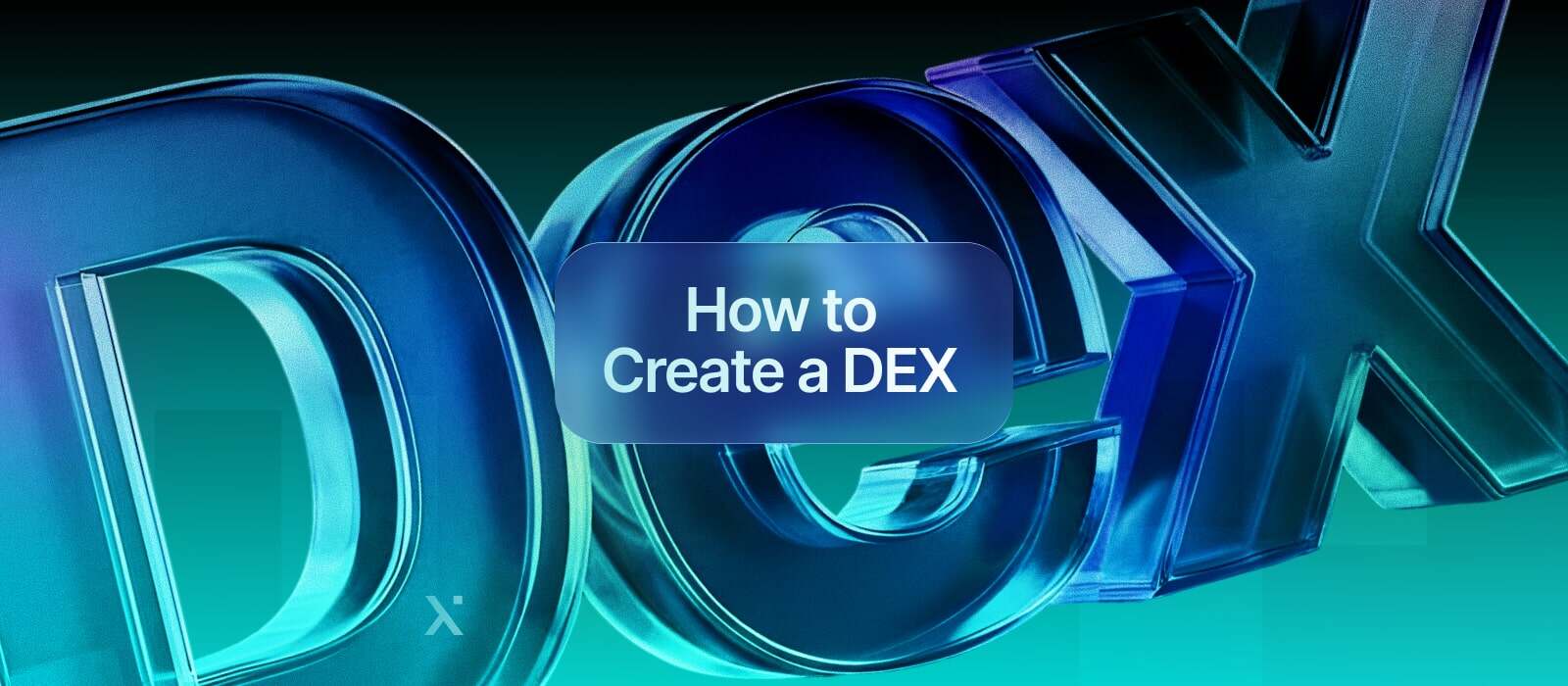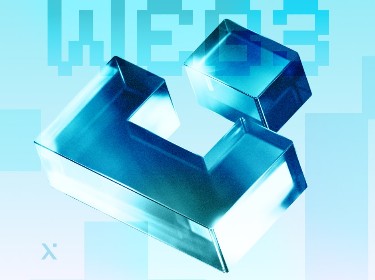Building a decentralized exchange (DEX) seems simple: smart contracts manage trades, users retain control over their assets, and the system operates without intermediaries. In reality, things are much more complex.
If poorly designed, the logic of token exchanges, liquidity management, and wallet interactions can be vulnerable. One weak link, and the platform becomes unusable or insecure.
For years, centralized exchanges dominated cryptocurrency trading. They offered speed and convenience, but at the cost of control. Users had to trust that the exchange would protect their funds, maintain clean accounting records, and remain solvent. Many didn’t. This precisely pushed the market toward decentralized models — platforms where transactions occur directly between wallets, and transparency is built into the code.
However, developing a reliable and efficient DEX is not only a technical challenge. It is also an architectural one. It’s essential to balance transparency and performance, establish clear user flows, and integrate security from the first line of code.
We’ll address the problem of building a decentralized cryptocurrency exchange that operates securely, predictably, and scalably.
PixelPlex has spent years building decentralized, centralized, and hybrid cryptocurrency exchange infrastructure for various business cases and user types. We’ve seen what happens when developers choose the wrong protocol, ignore audit requirements, or underestimate liquidity design. Therefore, this guide isn’t a theory. It’s a roadmap shaped by real projects and mistakes, learned hard.
This article will be helpful for:
- Entrepreneurs planning to launch a cryptocurrency trading platform
- Developers wanting to understand the entire DEX development process
- Product owners and investors evaluating the cost and timeline of such a project
We’ll explain how to create a cryptocurrency exchange from MVP to enterprise level, the technologies and stacks used, and what influences the overall cost. By the end, you’ll have a clear understanding of what’s actually required for cryptocurrency exchange development and what differentiates a working product from an idea on a whiteboard.
What is a decentralized cryptocurrency exchange?
A decentralized exchange, or DEX, is a trading platform that allows users to swap digital assets directly — wallet to wallet — without giving control of their funds to a third party. No company holds your private keys, and no centralized database tracks who owns what. Everything happens through smart contracts on a blockchain.
In practice, every trade, swap, or liquidity event is executed and verified on-chain. The code defines the rules, not a corporate policy or human operator. That structure eliminates custody risk but also shifts responsibility to the user. Lose your wallet access, and the assets are gone. There’s no “Forgot password?” link here.
Centralized exchanges (CEXs) work differently. They operate more like traditional brokerages: users deposit their tokens, and trades occur inside the exchange’s internal system. Prices move fast because the process is handled off-chain. But that convenience comes with trade-offs — mostly around control and transparency.
![]()
Let’s look at a direct comparison.
| Parameter | Centralized exchange (CEX) | Decentralized exchange (DEX) |
| Custody | Platform holds user funds | Users retain full control |
| Transparency | Partial | Full (on-chain) |
| Security | Vulnerable to hacks and insider breaches | Exposed mainly to smart contract vulnerabilities |
| KYC/AML | Required for compliance | Often optional or community-driven |
| Speed | High (off-chain order matching) | Lower (on-chain execution) |
A shift in how trading works
The difference between CEXs and DEXs isn’t just technical — it’s philosophical. Centralized exchanges focus on usability and compliance; decentralized ones focus on autonomy and open access. CEXs offer familiar interfaces, fiat gateways, and fast order books. DEXs give you verifiable ownership and censorship resistance.
Each model solves a different problem. For many traders, centralized exchanges remain a practical entry point. However, decentralized exchanges are quickly becoming the default for those who care about transparency, self-custody, or cross-chain access.
That’s why DEXs have become one of the core pillars of decentralized finance (DeFi). They represent what crypto aimed initially for: a system where users trade on their own terms, not under the policies of an intermediary.
And while the idea sounds simple — trade directly from your wallet, no middlemen — the mechanism that makes it possible is anything but.
Centralized Сrypto Exchange Development Explained: From Architecture to Launch
Web3 Development: What It Takes to Build the Future
How does a decentralized exchange work?
At its core, a decentralized exchange replaces the traditional “middleman” with code. A company doesn’t execute trades; they’re handled by smart contracts — self-executing programs that live on the blockchain and follow predefined rules.
When two users want to swap tokens, the contract checks the terms, verifies balances, and transfers assets directly between wallets: there is no deposit, withdrawal queue, or centralized ledger. The blockchain itself becomes the settlement layer.
That’s the simple version. In practice, a DEX is a web of interconnected components:
Smart contracts
These form the backbone of a DEX. They define how tokens are listed, trades are executed, and liquidity is managed. In decentralized exchange development, everything starts with
smart contract development — writing, testing, and auditing the code that governs how funds move and how transactions are verified. Once deployed, the logic can’t be changed without a new version, which is both a feature and a risk. If there’s a flaw, it’s visible to everyone and can be exploited instantly. That’s why audits matter just as much as architecture and design.
Liquidity pools
Most DEXs don’t match buyers and sellers directly. Instead, they use liquidity pools — shared token reserves that let users swap instantly at algorithmic prices. Contributors to these pools (liquidity providers) earn a small percentage from each trade, creating a self-sustaining system.
In practice, that means you can trade anytime, even if no one else is placing the same order. The smart contract just pulls tokens from the pool and adjusts the ratio to set a new price.
Wallet integration
A DEX doesn’t store funds; it connects to wallets like MetaMask, Trust Wallet, or WalletConnect-compatible apps. The interface simply acts as a bridge between the user’s wallet and the blockchain. Once a transaction is signed, the wallet pushes it directly to the network.
Order matching or AMM logic
Older decentralized exchanges tried to mimic centralized order books — and failed. The process was too slow and expensive on-chain. Then came Automated Market Makers (AMMs), which changed everything. Instead of pairing orders, AMMs use mathematical formulas to price trades dynamically.
That’s why swapping on DEXs feels instant — it’s not finding a counterparty; it’s interacting with an algorithm that already holds both tokens.
![]()
What to Know About Decentralized Exchanges?
What’s Special About Decentralized Exchanges?
Functional layers of a decentralized exchange
| Layer | Purpose | Example components |
| Protocol layer | Defines trading logic and asset management | Smart contracts, liquidity pools |
| Application layer | Handles user interaction and transaction routing | Web interface, SDKs, APIs |
| Infrastructure layer | Connects to blockchain and external data | Nodes, oracles, RPC endpoints |
| Liquidity layer | Ensures sufficient trading volume | AMM algorithms, liquidity mining tools |
| Governance layer | Enables community control and upgrades | DAO contracts, voting modules |
Advantages of DEX architecture
A decentralized exchange comes with a few defining advantages that aren’t just technical — they’re structural:
- Non-custodial trading: users hold their own funds at all times.
- Censorship resistance: no central authority can block or reverse trades.
- Transparency: every transaction is visible and verifiable on-chain.
- Global reach: anyone with an internet connection and a wallet can participate.
Of course, there are trade-offs. On-chain execution is slower than off-chain systems. Gas fees fluctuate. And while the system itself can’t be hacked in the same way as a centralized exchange, poorly written smart contracts can — and have been — exploited.
Blockchain for Business: Beyond Cryptocurrency to Real-World Value
Blockchain in Payment Services: Trends, Technologies, and Development Best Practices
How to create a decentralized cryptocurrency exchange
Creating a decentralized exchange isn’t a weekend coding project. It’s a structured, multi-stage process that blends blockchain engineering, product design, and economic modeling. The technology is open, but the execution determines whether a DEX becomes a sustainable trading platform or another half-finished prototype.
Below is a typical cryptocurrency exchange development process, from initial research to a live online product.
![]()
1. Market and technical research
Everything starts with defining what kind of DEX you want to build.
- Will it support multiple tokens or focus on a niche (like stablecoins or derivatives)?
- Will it use a constant product AMM model, or introduce dynamic pricing logic?
This phase involves not just business analysis but deep blockchain development planning, identifying which protocols, tokens, and standards the exchange will support. At PixelPlex, we evaluate existing frameworks — whether to build from scratch or customize a white-label cryptocurrency exchange platform.
2. Business logic and tokenomics design
A decentralized exchange isn’t just software; it’s a market ecosystem. Tokenomics defines how liquidity moves, how participants are rewarded, and how governance evolves.
This stage covers:
- Fee structures (fixed vs. dynamic)
- Incentive mechanisms for liquidity providers
- Governance token distribution (if applicable)
- Staking or farming logic
- Treasury and DAO management rules
Every variable here affects how sustainable the platform will be. Poorly designed tokenomics can drain liquidity faster than any technical issue.
How to Create a Crypto Token: Steps, Types, and Benefits
How to Create Effective Tokenomics?
3. UI/UX prototyping
Decentralization doesn’t have to mean bad design. Still, most DEXs lose users here. The interface must make complex blockchain interactions (approvals, gas fees, contract calls) feel intuitive.
Wireframes and clickable prototypes are created to test flows like wallet connection, swap confirmations, and liquidity provision. The goal is to simplify self-custody for non-developers, while keeping advanced options available for power users.
4. Smart contract development
This is the foundation. Every exchange rule — trade execution, liquidity management, fee collection — is embedded into smart contracts.
The process involves:
- Writing core logic in Solidity, Vyper, or Rust
- Integrating AMM or order-matching mechanisms
- Setting permissions and access control
- Implementing upgradeability if needed (proxy patterns, governance modules)
Once the contracts are written, they go through extensive testing and peer review. This is where smart contract development overlaps with security engineering. Every line of code can become a potential attack vector — and one exploit can destroy the entire platform.
5. Frontend and backend integration
The frontend connects users to the protocol through web3 libraries (Ethers.js, Web3.js, or similar). It handles wallet integration, data visualization, and transaction prompts.
The backend (when present) might handle caching, analytics, or off-chain utilities like price tracking or cross-chain routing. In a pure DEX, it’s lightweight; in hybrid systems, it plays a larger role in performance optimization and UX refinement.
Integration testing ensures the app communicates correctly with blockchain nodes and external APIs.
6. Testing and auditing
Once functionality is complete, the DEX enters its most critical stage: testing.
This includes:
- Unit and integration tests on testnets
- Gas usage optimization
- Penetration testing for smart contracts
- Independent security audits (often multiple)
Audits aren’t formalities. They’re the only reliable way to identify vulnerabilities before real assets are at stake. Reputable firms test not only for logic flaws but also for flash loan exploits, reentrancy attacks, and gas griefing risks.
7. Launch and liquidity bootstrapping
After successful audits, the contracts are deployed to the mainnet. But a DEX launch doesn’t start with massive trading volume — it starts with liquidity.
Liquidity bootstrapping involves seeding initial pools, attracting providers through rewards or yield farming, and gradually stabilizing prices as real trading begins. Some projects run “guarded launches” or limit early access to reduce attack surface.
From here, the focus shifts to ongoing optimization — analytics, governance updates, new pair listings, and community engagement.
DEX development stages and deliverables
| Stage | Core activities | Deliverables | Key risks |
| Research & planning | Market analysis, blockchain selection, feature mapping | Product requirements, technical architecture | Poor chain choice, unclear scope |
| Tokenomics design | Define fee models, rewards, governance structure | Tokenomics document, reward simulations | Unsustainable liquidity model |
| UI/UX prototyping | Wireframes, user journey mapping | Interactive prototype | Poor user adoption |
| Smart contract development | Write and test core protocol logic | Audited contracts, deployment scripts | Vulnerabilities, logic errors |
| Integration & backend setup | Wallet connections, node integration, APIs | Working front-end and backend | Latency, poor synchronization |
| Testing & auditing | Security tests, bug fixes, audit reviews | Audit reports, optimization notes | Missed vulnerabilities |
| Launch & bootstrapping | Mainnet deployment, liquidity seeding | Live product, initial liquidity | Low adoption, capital inefficiency |
Launching a decentralized exchange is less about writing code and more about building a sustainable system. Start with a clear concept, assemble a strong technical and legal team, and release a minimal version to test real-world performance. Then, focus on security, funding, gradual scaling, and aligning technology, tokenomics, and community from the beginning.
How to Build a Decentralized Exchange Like Uniswap
Top Ethereum DeFi Lending, DEX, and Payments Projects
Estimated timelines and team composition
Building a decentralized exchange takes time — not because the technology is mysterious, but because every piece has to work together perfectly before real assets are involved.
Developing a minimum viable product (MVP) for a single blockchain with a basic set of features — wallet connection, token swaps, and liquidity pools — generally takes 4–6 months. This assumes a compact team working in well-defined sprints, using existing open-source libraries and frameworks to accelerate delivery. Most of that time goes into smart contract development, testing, and security verification.
An enterprise-grade DEX, on the other hand, often takes 8–12 months to reach production. The difference isn’t just scale — it’s coordination. These projects usually include multiple smart contract systems (staking, governance, cross-chain bridges), comprehensive audits, complex analytics dashboards, and high-load infrastructure planning. Integrating multi-chain support or advanced governance can add weeks per module.
A smaller MVP typically needs a core team of 4–6 specialists:
![]()
- 2 blockchain engineers / smart contract developers handle core protocol logic, liquidity mechanisms, and integrations.
- 1 frontend developer builds the user interface, wallet connections, and transaction flow.
- 1 backend developer or DevOps specialist manages infrastructure, APIs, and node communication.
- 1 UI/UX designer ensures clarity in user journeys, data visualization, and transaction confirmation flows.
- 1 QA engineer tests contract interactions, frontend responsiveness, and multi-browser compatibility.
This lean setup can deliver a robust MVP but leaves little room for parallel development.
The team size often doubles for enterprise-scale projects. You may have dedicated squads for smart contract auditing, frontend and analytics, and cross-chain infrastructure, sometimes running in parallel streams. Some teams bring part-time specialists — tokenomics analysts, external auditors, or cryptocurrency exchange software developers focused on optimizing EVM performance.
Choosing the right technology stack for DEX development
A decentralized exchange isn’t just a product but a network-dependent system. Your chosen technology determines how secure, scalable, and sustainable it will be. Every layer, from smart contract logic to user interface, affects performance and long-term costs.
There’s no single best stack for DEX development. The right combination depends on your goals, target audience, and the blockchain ecosystem you plan to operate in. Still, some tools have proven themselves reliable through years of real-world use.
Recommended stack for cryptocurrency exchange platform development
| Layer | Tools/technologies | Purpose | Notes |
| Smart contracts | Solidity, Vyper, Rust | Define DEX logic, trading, and liquidity management | Solidity dominates for EVM chains |
| Blockchain platform | Ethereum, BNB Chain, Polygon, Solana | Host and execute contracts | Choose based on liquidity, gas cost, and performance |
| Development frameworks | Hardhat, Truffle, Foundry | Build, test, deploy smart contracts | Enables automation and debugging |
| Frontend libraries | React, Next.js, web3.js, Ethers.js | Interface for users and wallet connection | Integrates with wallets and APIs |
| Storage & data | IPFS, Filecoin, The Graph | Decentralized storage and blockchain indexing | Improves transparency and accessibility |
| Security tools | OpenZeppelin, Slither, MythX | Vulnerability detection, contract auditing | Must be included in every development cycle |
| Oracles & integrations | Chainlink, Band Protocol | Fetch real-time data and cross-chain prices | Ensures accurate AMM operations |
As multi-chain trading becomes the norm, cross-chain bridges and messaging protocols (like Wormhole or LayerZero) allow users to swap assets across ecosystems. However, each added connection increases complexity and security exposure, so they must be audited as carefully as the DEX.
What Is a Blockchain Wallet?
How to Build a Crypto Wallet: a Complete Guide
Key features to include in a decentralized exchange
A decentralized exchange is a layered system where every feature affects performance, security, and user experience. The goal isn’t to add as many functions as possible, but to include those that make trading frictionless, transparent, and secure.
Below, we’ll review the key elements every DEX needs, grouped by their primary purpose: trading, liquidity, governance, and operations. Together, they define how your platform will function and evolve.
![]()
1. Trading and user interaction
Users engage with the DEX in the trading layer, connecting wallets, placing swaps, and monitoring transactions. It sets the tone for usability and trust.
- Wallet integration: Every DEX begins here. Users should connect through non-custodial wallets such as MetaMask or WalletConnect. Smooth wallet pairing and clear transaction prompts prevent early drop-offs.
- Token swaps: This is the DEX’s core function. Swaps happen through smart contracts or automated market maker (AMM) algorithms, enabling direct peer-to-peer exchanges. Transparency in price, slippage, and gas fees is key.
- Transaction preview and confirmation: Before execution, users should see detailed swap data, including output tokens, price impact, and fees. This feature builds trust and reduces user errors.
- Cross-chain support (advanced): Enabling swaps between networks adds flexibility to multi-chain ecosystems, though it requires secure bridges and more complex routing logic.
2. Liquidity and incentive management
Without liquidity, there is no market. The liquidity layer ensures the constant availability of trading pairs and healthy pricing dynamics.
- Liquidity pools: Liquidity providers (LPs) deposit token pairs into smart contracts. Their assets enable others to trade and, in return, they earn a share of transaction fees.
- Yield farming and staking: These features reward users who provide liquidity or lock tokens for governance. They’re powerful tools for bootstrapping early participation, but must be designed carefully to prevent inflation or pool manipulation.
- Dynamic pricing models: Integrating flexible AMM logic or hybrid pricing helps stabilize slippage and improve market depth. Different models (constant product, hybrid, or dynamic) can coexist depending on the asset type.
3. Governance and transparency
Governance isn’t a nice-to-have — it keeps a decentralized system running long-term.
- DAO or governance token: Token holders can vote on upgrades, fees, and new listings. It creates accountability and aligns the community with project goals.
- On-chain proposals and voting: Governance contracts should support on-chain proposal creation, voting mechanisms, and transparent result tracking.
- Analytics and reporting dashboard: Real-time data on volume, liquidity, and active wallets increases transparency for users and regulators and helps the team make data-driven improvements.
4. Administration and maintenance
Even decentralized systems need operational oversight, preferably through secure, auditable interfaces.
- Admin dashboard: This dashboard enables the core team to manage pairs, monitor liquidity, update parameters, and access system metrics without directly touching the contracts.
- Notification system: Alerts users about completed trades, staking rewards, governance events, or network issues, maintaining engagement and transparency.
- Access control and monitoring: Administrative functions must use multi-signature or time-lock mechanisms to prevent unauthorized changes.
Functional overview of DEX features
| Feature | Main objective | Implementation tip |
| Wallet integration | Secure user access to the protocol | Use WalletConnect or web3modal for broad support |
| Token swaps | Core trading functionality | Optimize AMM math for low slippage |
| Transaction preview | Reduce user errors and build trust | Display slippage, network fees upfront |
| Liquidity pools | Maintain continuous trading depth | Encourage long-term LP retention via incentives |
| Yield farming/staking | Motivate liquidity provision | Lock tokens to prevent instant withdrawals |
| Dynamic AMM models | Improve market stability | Mix stable and volatile pairs separately |
| DAO governance | Decentralized decision-making | Start centralized; decentralize gradually |
| Analytics dashboard | Transparency and insight | Use The Graph for efficient queries |
| Admin dashboard | Manage and monitor DEX activity | Build with RBAC and audit logs |
| Notifications | Keep users informed | Support on-chain and off-chain events |
| Access control | Protect protocol from misuse | Enforce controlled upgrades |
Launch the DEX in phases rather than implementing all features at once. Start with swaps, liquidity pools, and wallet support for an MVP, then gradually add governance, analytics, and staking. Every addition should strengthen security, not complexity.
Inside Crypto Wallet MVP Development: Process, Costs, and Real-World Lessons
From Idea to Launch: The Essentials of eCommerce MVP Development
How much does it cost to develop a decentralized exchange?
The cryptocurrency exchange development cost depends on one thing above all else — scope. A DEX can be a lightweight prototype handling a few token pairs or a full-scale multi-chain platform processing thousands of daily transactions. Between those extremes, every choice — blockchain, feature set, design complexity, audit depth — changes the price.
Unlike simple dApps, a decentralized exchange requires coordinated work across multiple layers: smart contracts, frontend, backend (if any), liquidity logic, and testing. Teams often include blockchain engineers, cryptocurrency exchange software developers, UX designers, DevOps specialists, and auditors working in parallel.
Main factors influencing cryptocurrency exchange development cost
![]()
Project scope and feature set
- MVPs with swaps, liquidity pools, and wallet connections are simpler to build.
- Enterprise-grade exchanges add staking, governance, analytics, and multi-chain routing.
Blockchain selection
- Building on Ethereum or Layer-2 chains costs more due to higher gas optimization and audit needs.
- EVM-compatible networks like BNB Chain or Polygon can reduce development and deployment costs.
Smart contract complexity
- Custom AMM algorithms, yield farming logic, and governance contracts add significant testing and auditing time.
- The more automation the protocol handles, the higher the audit cost.
Security and audits
- A proper security audit can take weeks and cost as much as development — but skipping it isn’t an option.
- Mature DEX projects usually commission two or more independent audits before launch.
Team composition and region
- Senior blockchain engineers in North America or Western Europe are more expensive than teams in Eastern Europe or Asia, but experience in high-volume exchange systems often justifies the difference.
Ongoing maintenance and scaling
- After launch, costs shift toward node management, bug fixes, liquidity partnerships, and new chain integrations.
Approximate DEX development breakdown (MVP vs. enterprise)
| Development stage | MVP scope | Enterprise scope | Key deliverables |
| Planning & research | 2–3 weeks | 1–2 months | Architecture, blockchain selection, tokenomics outline |
| UI/UX design | Basic responsive interface | Advanced UX with analytics and dashboards | Wireframes, interactive prototype |
| Smart contract development | AMM, liquidity pools, swap logic | Cross-chain routing, staking, governance modules | Core contracts and test suite |
| Frontend & integration | Web3 wallet connection, swap UI | Multi-wallet, multilingual interface, analytics layer | Integrated web application |
| Testing & auditing | Internal QA, 1 external audit | Multi-stage audit, stress testing | Reports, security validation |
| Deployment & launch | Single-chain mainnet deployment | Multi-chain launch, liquidity seeding | Live DEX, user onboarding materials |
| Post-launch support | 1–2 months | Ongoing maintenance | Bug fixes, feature expansion, performance monitoring |
What to expect
There’s no fixed number, but typical DEX projects fall into these rough brackets:
- MVP-level DEX: covers wallet integration, swaps, and basic liquidity pools.
- Mid-range DEX: adds governance, staking, and analytics dashboards.
Enterprise-scale platform: supports multi-chain trading, DAO integration, and high-performance frontends.
There’s no fixed number, but typical DEX projects fall into these rough brackets:
- MVP-level DEX: covers wallet integration, swaps, and basic liquidity pools.
- Mid-range DEX: adds governance, staking, and analytics dashboards.
- Enterprise-scale platform: supports multi-chain trading, DAO integration, and high-performance frontends.
Crypto Payment Gateway: Costs, Benefits, Implementation
Smart Contract Development Cost Demystified: What Every Business Should Know
Top 5 companies in cryptocurrency exchange development
Choosing the right cryptocurrency exchange development company can determine whether your project launches smoothly or stalls midway through audits and integrations. Even with the best concept and tokenomics, execution depends on experience — teams already built, scaled, and maintained a secure trading infrastructure.
To give a clearer view of the market, we’ve reviewed data from Clutch and other open sources to identify five companies consistently delivering high-quality results in cryptocurrency exchange development. The list below is based on public project portfolios, client feedback, domain expertise, and decentralized or hybrid exchange architecture specialization.
These companies stand out for their technical depth, audit history, and ability to take projects from concept to production-ready DEX platforms.
| Company | Headquarters | Core expertise | Key strengths |
| PixelPlex | USA | Blockchain, smart contract engineering, DEX, and DeFi | End-to-end development, deep audit focus |
| IdeaSoft | Estonia | Blockchain and Web3 development, end-to-end security audits | DeFi and DEX architecture, customizable AMM solutions, and multichain integration |
| LeewayHertz | India | Blockchain and enterprise-grade DEX solutions, real-time data APIs, smart contract automation, and scalable multichain interoperability | AI, IoT, Web3, metaverse and blockchain technologies |
| Coinfabrik | Argentina | Blockchain security and smart contract auditing, DEX architecture | Liquidity optimization and penetration testing |
| Labrys | Australia | Blockchain development, DEX, and analytics dashboard design | Multi-chain scalability and compliance-focused DeFi solutions |
Each listed company demonstrates a solid track record of handling full-cycle cryptocurrency exchange development. They differ in focus — some specialize in enterprise-grade systems, others in fast MVPs — but all share strong foundations in smart contract security, user experience, and regulatory awareness. While the rankings are not absolute, they provide a clear starting point for anyone comparing potential partners.
Top 10 AI Software Development Companies 2025
Top 10 Blockchain Development Companies in 2025
Why choose PixelPlex for cryptocurrency exchange development
When it comes to decentralized exchange development services, PixelPlex brings more than technical capability — it brings proven, real-world experience. For over a decade, our team has been engineering blockchain solutions that power secure, scalable, and transparent digital trading.
We don’t just write code; we design ecosystems. Our approach covers every development lifecycle stage — from tokenomics and architecture planning to smart contract engineering, auditing, and post-launch optimization. We deliver exchanges that perform reliably under real-world conditions by combining in-house blockchain expertise with advanced DeFi infrastructure design.
PixelPlex has worked with startups and enterprises to create products that balance transparency, speed, and security. Our engineers focus on interoperability, efficient liquidity management, and seamless user experience — the core principles that define the best decentralized exchanges in the market.
Below are two examples of how we apply our expertise in cryptocurrency exchange development in practice — solutions created for different user groups but driven by the same goal: building trustless, high-performance trading systems.
Bitnetwork
Web and mobile crypto exchange for professional traders with advanced security and full client support.
20+ trading modules
Read more about BitnetworkWrapping Up the PixelPlex STEM Scholarship Program
A Comprehensive Guide to Blockchain Application Development
Conclusion
Building a decentralized exchange isn’t just about deploying smart contracts or designing a sleek interface. It’s a complex process that combines blockchain engineering, tokenomics, and long-term maintenance. The success of any platform depends on understanding how each layer — from liquidity logic to governance — interacts with the others.
In today’s market, users expect transparency, low latency, and seamless wallet integration. Meeting those expectations requires a deliberate approach to cryptocurrency exchange development grounded in experience, security-first thinking, and scalable architecture.
Whether creating a lightweight MVP or a full-scale multi-chain platform, the same principles apply: clear business logic, strong code audits, and a development partner that knows the ecosystem inside out. Choosing the right development company means gaining technical support and strategic guidance for long-term sustainability.
PixelPlex offers the expertise, frameworks, and cryptocurrency exchange development services needed to turn an idea into a functioning, market-ready product. From architecture planning to launch and maintenance, every stage is handled with precision and transparency, helping businesses build exchanges that traders trust. Just contact us to start a project.
FAQ
The most common hurdles are achieving reliable liquidity, ensuring security through multiple audits, and maintaining a smooth UX while dealing with on-chain delays.
Yes. White label crypto exchange development allows businesses to deploy ready-made, customizable exchange software quickly. It reduces time to market, but may limit flexibility compared to a fully custom DEX architecture.
DEXs eliminate custodial risk since users hold their funds. However, vulnerabilities in smart contracts or liquidity logic can still lead to exploits if the code isn’t properly audited.
To create a white label crypto exchange, you choose a pre-built platform from a provider, customize branding, configure token pairs and fees, integrate wallet APIs, and perform a security audit before launch. It’s faster than custom builds, but less flexible in logic modification.
The main security risks in decentralized exchanges include unverified smart contracts, reentrancy attacks, flash-loan exploits, and weak admin key management. The best protection is rigorous smart contract auditing, time-locked governance, and strict access control measures to prevent unauthorized actions.
Expect broader adoption of cross-chain liquidity, zero-knowledge proofs, and modular blockchain architectures. These will make decentralized exchanges faster, more private, and easier to scale while staying transparent.




